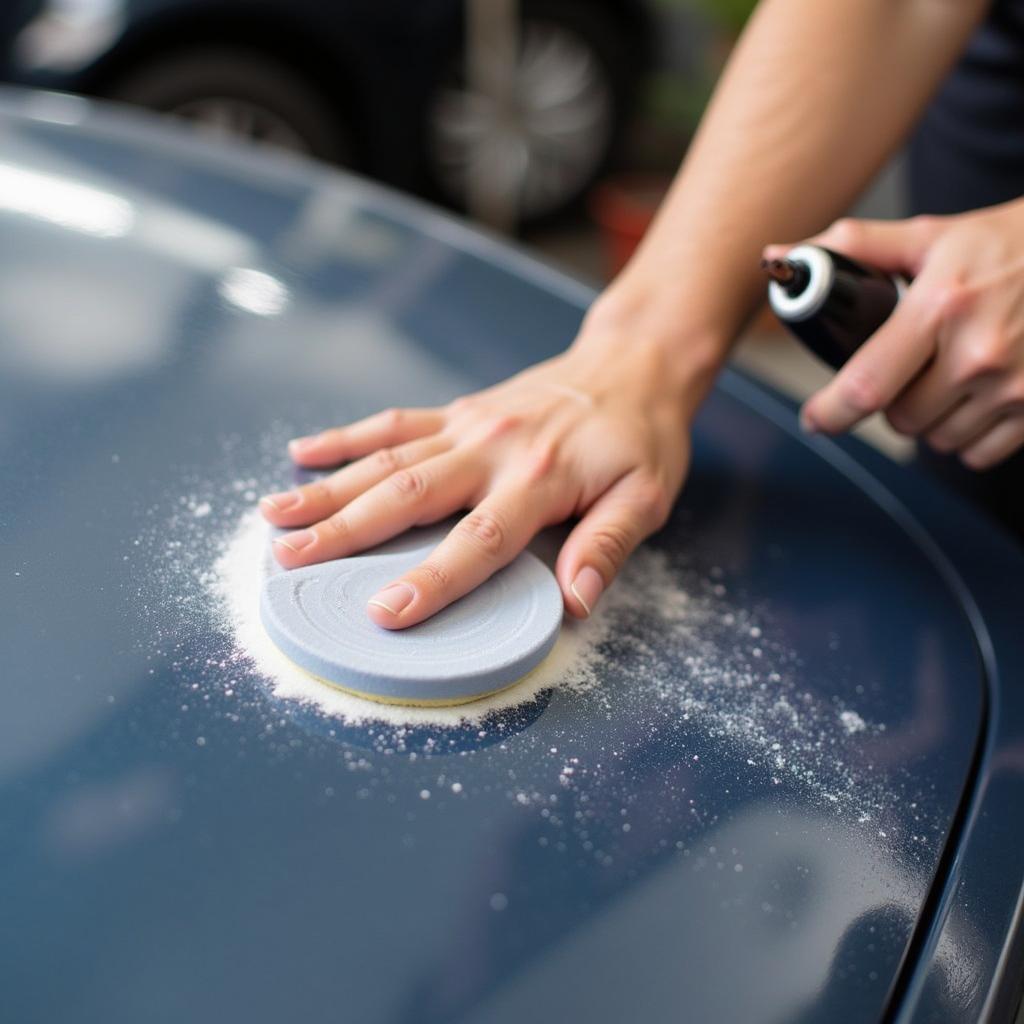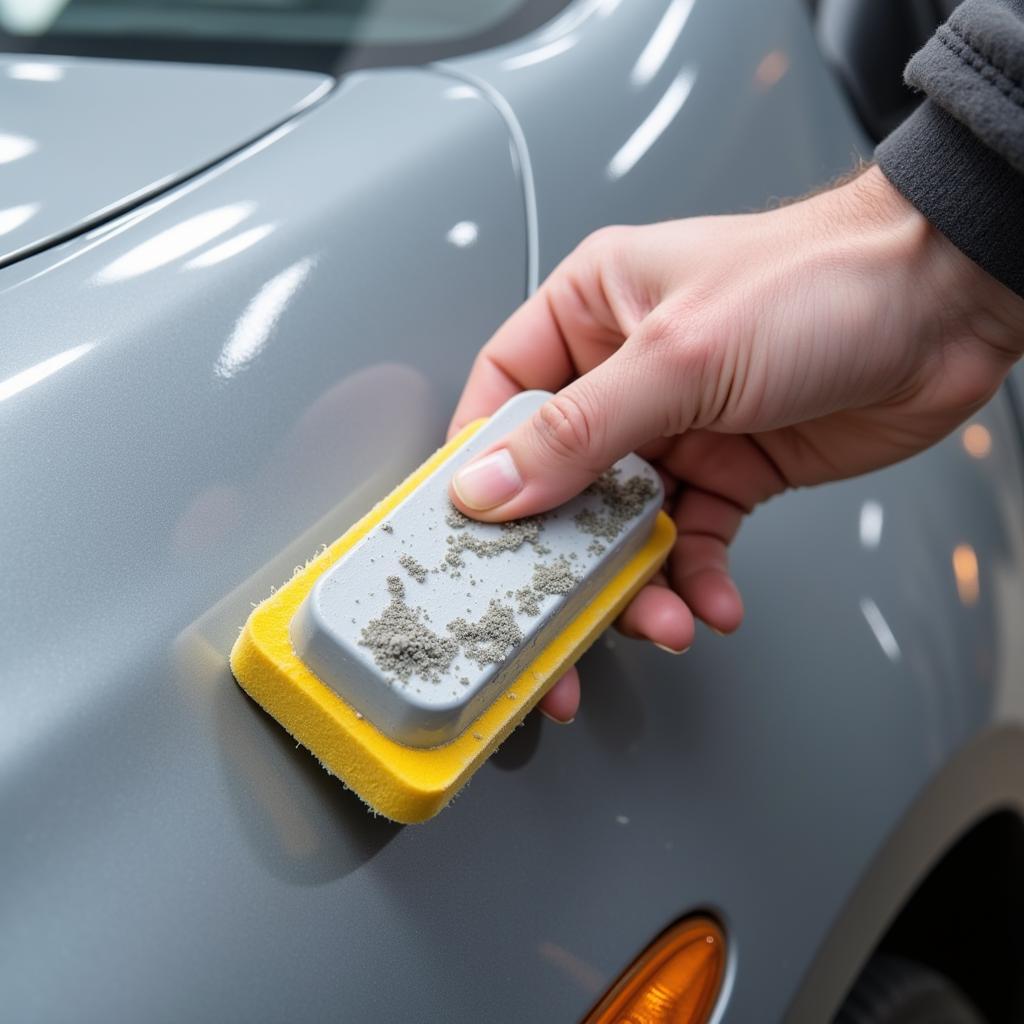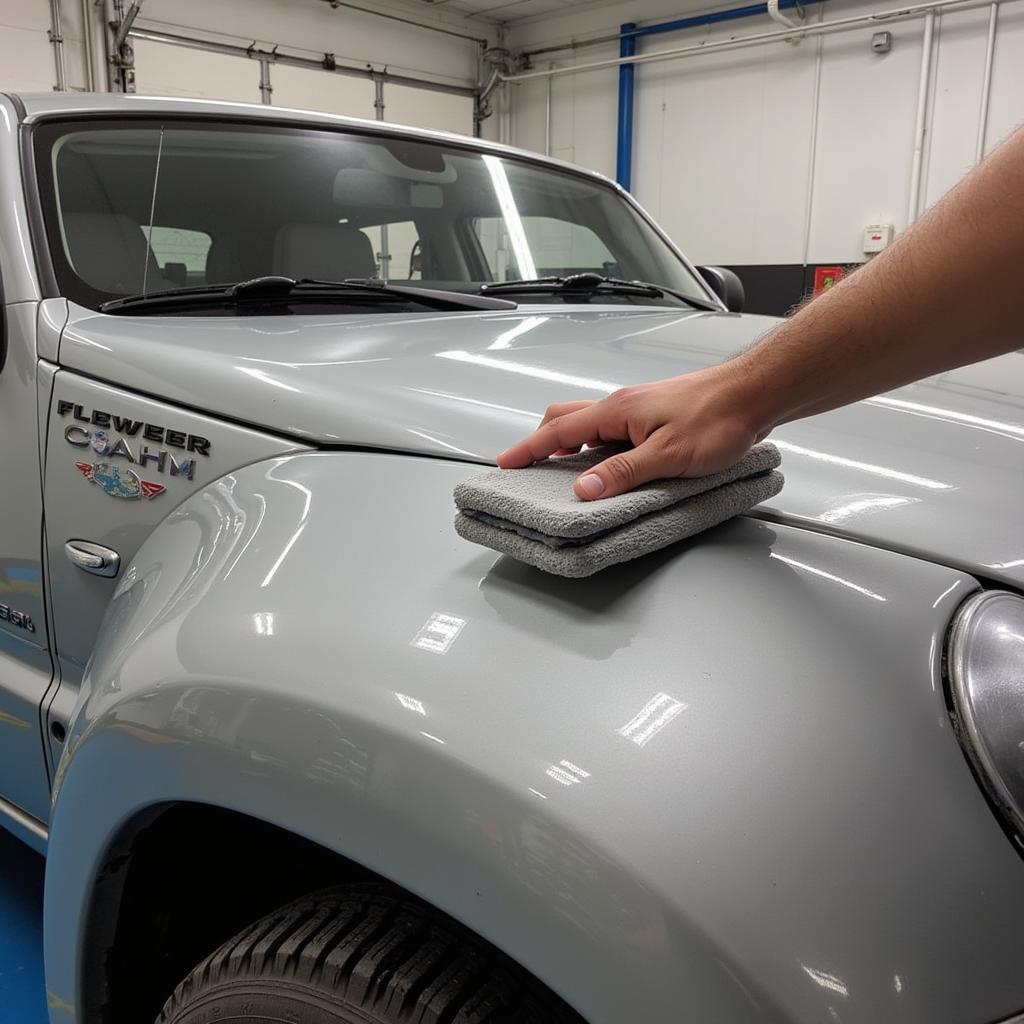Claying your car is a crucial step in achieving a truly flawless finish. It removes embedded contaminants that washing alone can’t tackle, leaving your paint smooth as glass. This guide will explain How To Use Clay For Car Detailing, providing you with the knowledge and techniques to achieve professional-level results.
Learning how to use clay for car detailing is like unlocking a secret level of clean for your vehicle. It goes beyond a simple wash and wax, targeting those stubborn, microscopic contaminants that roughen your paint and dull its shine. These contaminants include industrial fallout, tree sap, bug remains, and brake dust, all of which bond to your car’s clear coat over time. By incorporating claying into your detailing routine, you are preparing the surface for polishing and waxing, ensuring a perfect bond and maximizing the effectiveness of these steps. You can learn more about detailing like a pro here: how to detail your car like a professional.
Why Use Clay in Car Detailing?
Claying, often overlooked, is a critical step in detailing. Think of your car’s paint as your skin; washing removes surface dirt, but claying goes deeper, extracting embedded impurities. This prepares the paint for polishing and protection, ensuring optimal results. Wondering if you should detail an older car? Find out more here: should you detail an old car.
Benefits of Using Clay
- Smooth as Glass Finish: Clay removes microscopic contaminants, leaving your paint incredibly smooth.
- Enhanced Gloss: By removing embedded particles, clay allows your car’s true shine to emerge.
- Improved Protection: A clean surface ensures waxes and sealants bond properly, offering better protection.
- Prepares for Polishing: Claying creates the ideal surface for polishing, minimizing swirl marks and imperfections.
What You’ll Need for Claying Your Car
Before you begin, gather the necessary supplies. This includes a clay bar, detailing spray, and microfiber towels. Choosing the right clay and lubricant is essential for effective and safe decontamination.
Essential Claying Supplies
- Clay Bar: Choose a fine-grade clay bar for general use or a medium-grade bar for heavily contaminated vehicles.
- Detailing Spray/Lubricant: This provides the necessary lubrication to prevent scratching during the claying process.
- Microfiber Towels: Soft, high-quality microfiber towels are crucial for wiping away the lubricant and lifted contaminants.
How to Clay Bar Your Car: A Step-by-Step Guide
Now, let’s delve into the process of how to use a clay bar for detailing. Following these steps will ensure you achieve optimal results without harming your car’s paint. Remember, patience and thoroughness are key.
- Wash and Dry Your Car: Thoroughly wash your car to remove loose dirt and grime. Ensure the car is completely dry before proceeding.
- Knead the Clay: Warm the clay bar in your hands and knead it into a flat, pancake-like shape. This increases its pliability and effectiveness.
- Lubricate the Surface: Spray a generous amount of detailing spray onto a small section of the car’s paintwork. This lubrication is vital to prevent marring.
- Glide the Clay: Gently glide the clay bar across the lubricated surface using back-and-forth motions. Avoid applying excessive pressure. You should feel the clay grabbing the contaminants.
- Check the Clay: Regularly inspect the clay bar for contaminants. Fold and knead the clay to expose a clean surface as it becomes dirty.
- Wipe and Inspect: Once you’ve clayed a section, wipe the area dry with a clean microfiber towel. Inspect the paint for smoothness; repeat the process if necessary.
- Continue Section by Section: Work your way around the entire car, section by section, until the entire paint surface has been clayed.
 Applying Clay Bar to Car Paint
Applying Clay Bar to Car Paint
Common Mistakes to Avoid When Claying
While claying is relatively straightforward, there are common pitfalls to avoid. These mistakes can lead to swirl marks or other damage to your car’s paint.
- Using a Dirty Clay Bar: A contaminated clay bar can scratch your paint. Always fold and knead the clay to expose a clean surface.
- Insufficient Lubrication: Not using enough detailing spray can cause friction and marring. Ensure the surface is adequately lubricated before applying the clay.
- Dropping the Clay Bar: If you drop the clay bar, discard it immediately. It can pick up dirt and debris that will scratch your paint.
- Applying Too Much Pressure: Excessive pressure is unnecessary and can damage the paint. Let the clay do the work; a gentle glide is all that’s needed.
 Inspecting a Clay Bar for Contaminants
Inspecting a Clay Bar for Contaminants
Choosing the Right Clay Bar
Choosing the appropriate clay bar depends on the level of contamination on your car’s paint. Fine-grade clay bars are suitable for light contamination, while medium-grade bars are better for heavier contamination. For information on removing swirls, check out this article: how much to get car detailed to remove swirls.
Types of Clay Bars
- Fine-Grade Clay: Ideal for regular maintenance and lightly contaminated paint.
- Medium-Grade Clay: Suitable for moderately contaminated vehicles and those with embedded contaminants.
How Often Should You Clay Bar Your Car?
The frequency of claying depends on environmental factors and how often you wash your car. Generally, claying every six months to a year is sufficient for most vehicles. For more information on car detailing essentials, visit this Reddit thread: what do i need to detail my car reddit.
In conclusion, understanding how to use clay for car detailing is a game-changer for achieving a showroom-worthy shine. By following these steps and avoiding common mistakes, you can safely and effectively remove embedded contaminants, leaving your car’s paint smooth, glossy, and protected. Learn more about using a clay bar here: how to use clay bar car detail.
 Car After Clay Bar Treatment
Car After Clay Bar Treatment
FAQ
- Can I reuse a clay bar? Yes, as long as you haven’t dropped it. Knead it regularly to expose a clean surface.
- Is claying safe for all paint types? Yes, when used correctly with proper lubrication.
- How long does claying take? It depends on the car’s size and contamination level, but typically 1-2 hours.
- What if I drop the clay bar? Discard it immediately to avoid scratching your paint.
- Can I clay my car in direct sunlight? No, work in a shaded area to prevent the lubricant from drying too quickly.
- What are the signs my car needs claying? If the paint feels rough or gritty after washing, it’s time to clay.
- Can I use clay on glass or wheels? Yes, using a separate clay bar for these surfaces is recommended.
Need help with your car detailing? Contact us via WhatsApp: +1(641)206-8880 or Email: [email protected]. Our 24/7 customer support team is ready to assist you.

Leave a Reply